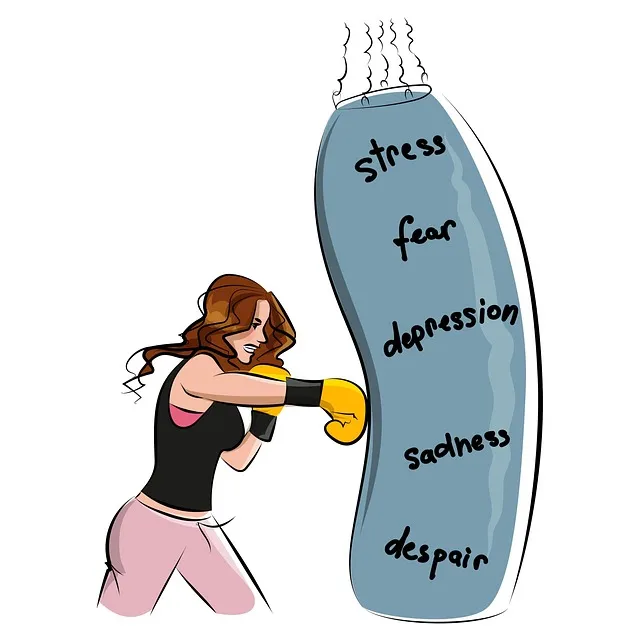Effective mental wellness group facilitation at Greenwood Village Kaiser Permanente behavioral health number relies on understanding and leveraging diverse backgrounds for open communication, mutual learning, and empathy-building. Key strategies include active listening, structured activities, and burnout prevention for healthcare providers. These methods create a supportive environment where participants feel valued, fostering trust and vulnerability to enhance therapeutic outcomes, as underscored by the comprehensive resources offered through the behavioral health number.
In today’s digital era, mental wellness group facilitation is more crucial than ever. This comprehensive guide explores effective techniques for navigating complex dynamics at Greenwood Village Kaiser Permanente behavioral health centers. From understanding group interactions to creating safe spaces and enhancing engagement, these strategies empower facilitators to foster supportive environments. By implementing proven communication tactics, you can revolutionize mental health support networks, ensuring every individual receives the care they deserve.
- Understanding Mental Wellness Group Dynamics
- Effective Communication Strategies for Facilitators
- Creating a Safe and Supportive Environment
- Techniques to Enhance Engagement and Participation
Understanding Mental Wellness Group Dynamics

Understanding Mental wellness group dynamics is essential for effective facilitation. In a setting like Greenwood Village Kaiser Permanente behavioral health number, groups often reflect the diverse experiences and perspectives of its members. This can create a powerful yet complex environment where individuals come together to support each other’s mental well-being. Facilitators play a crucial role in fostering an inclusive atmosphere that encourages open communication and mutual learning. Techniques such as active listening, reflective questioning, and structured activities help navigate the group dynamic, ensuring every participant feels valued and heard.
Burnout Prevention Strategies for Healthcare Providers and Mental Wellness Coaching Programs Development are integral to managing these dynamics. By incorporating Empathy Building Strategies, facilitators can enhance connections among members, fostering a sense of community and collective healing. This approach not only promotes mental wellness but also strengthens the support system within the group, ultimately enhancing the overall therapeutic experience.
Effective Communication Strategies for Facilitators

Effective communication is a cornerstone of successful group facilitation, especially within behavioral health settings like Greenwood Village Kaiser Permanente. Facilitators play a dual role in guiding discussions and fostering an environment conducive to mental wellness. To achieve this, facilitators must employ clear and concise language, ensuring every participant feels heard and understood. Active listening techniques, such as paraphrasing and summarizing, enable facilitators to grasp individual perspectives while promoting open communication.
In the context of anxiety relief and self-care routine development, facilitating open dialogue can help members share coping strategies and offer mutual support. By encouraging participants to express their thoughts and feelings, facilitators create a safe space for vulnerability, which is essential for building trust within the group. Additionally, incorporating interactive activities and exercises that engage all members ensures everyone actively participates in the process, enhancing overall mental health outcomes.
Creating a Safe and Supportive Environment

Creating a safe and supportive environment is a cornerstone of effective mental wellness group facilitation. In Greenwood Village at Kaiser Permanente, behavioral health professionals play a vital role in fostering such spaces. By prioritizing open communication, active listening, and empathy, facilitators cultivate an atmosphere where participants feel seen, heard, and valued. This not only encourages vulnerability but also strengthens the bond among group members, enabling them to support each other through challenges.
Incorporating burnout prevention strategies for healthcare providers is essential in maintaining this supportive ecosystem. Facilitators should practice positive thinking and mood management techniques themselves to ensure they can effectively teach and promote these skills among group participants. This holistic approach leverages the Greenwood Village Kaiser Permanente behavioral health number as a resource, offering a comprehensive solution that benefits both the facilitators and those seeking mental wellness support.
Techniques to Enhance Engagement and Participation

In facilitating mental wellness groups, engaging participants actively is key to creating a supportive and therapeutic environment, especially at Greenwood Village Kaiser Permanente behavioral health number. One effective technique is employing interactive activities and discussions that encourage open sharing. This can include icebreakers to foster camaraderie and break the ice, followed by group exercises that promote active listening and empathy among members. Facilitators should also adapt their communication strategies to ensure everyone feels heard, addressing different learning styles through visual aids, storytelling, or role-playing scenarios relevant to the group’s focus, such as mood management techniques.
Public awareness campaigns development can also play a crucial role in enhancing engagement by providing diverse perspectives and normalizing conversations about mental health. By incorporating these campaigns’ themes into group discussions, facilitators can stimulate thought-provoking conversations that resonate with members, making sessions more meaningful and participants more likely to apply learned strategies in their daily lives.
Group facilitation plays a pivotal role in enhancing mental wellness, as evidenced by effective practices from Greenwood Village Kaiser Permanente’s behavioral health services. By understanding dynamic group interactions, employing strategic communication, and creating safe spaces, facilitators can significantly impact participant engagement and overall well-being. Techniques discussed, such as active listening and inclusive activities, empower individuals to navigate their mental health journeys together. This collaborative approach not only fosters support but also serves as a powerful tool for personal growth, making it an essential component of modern behavioral health care.






